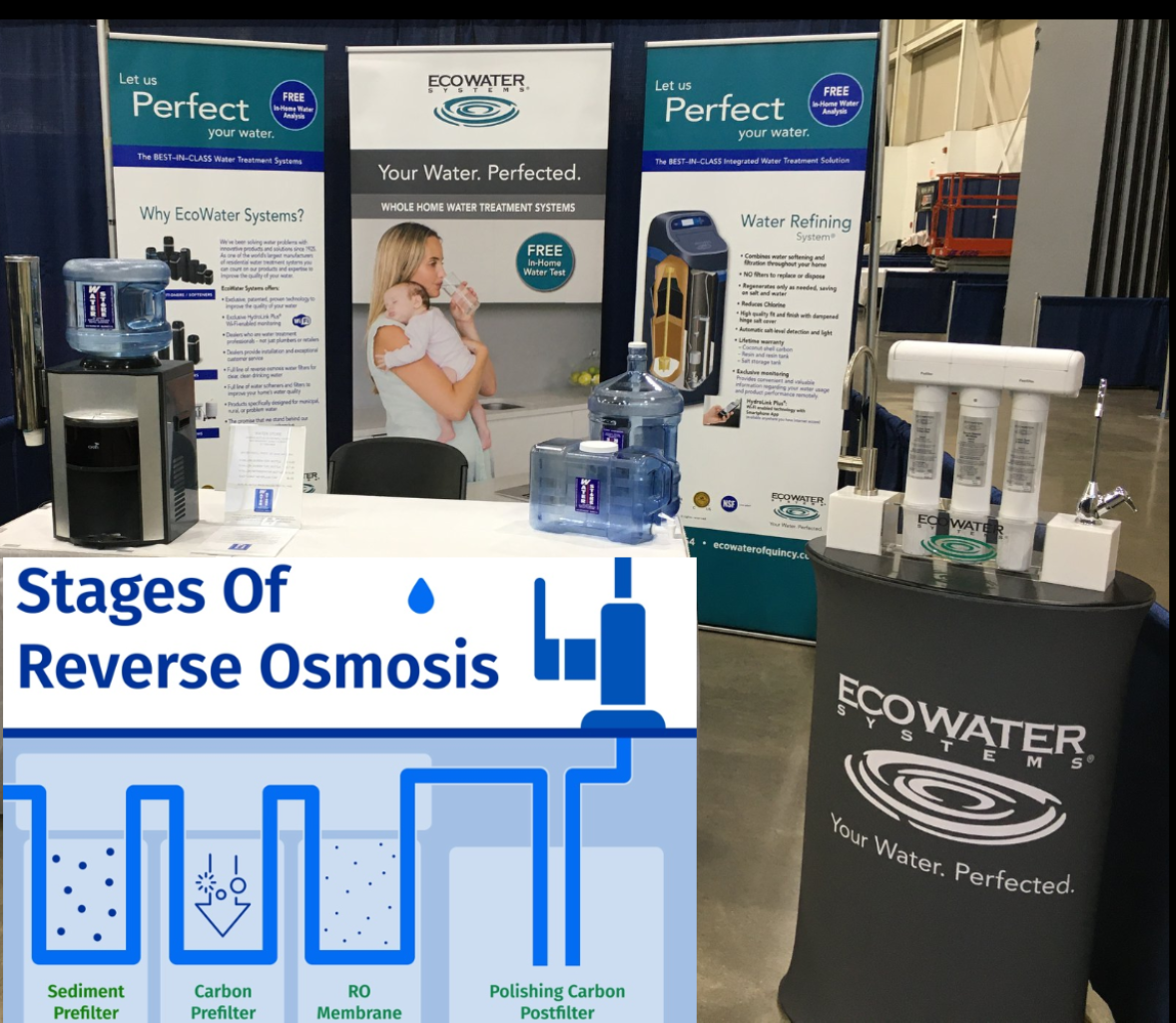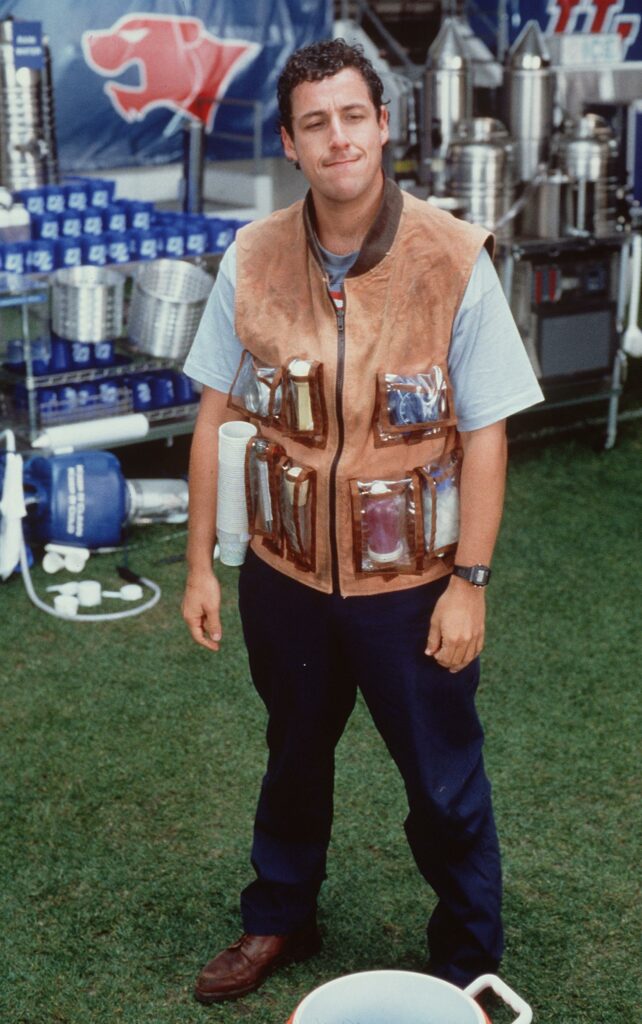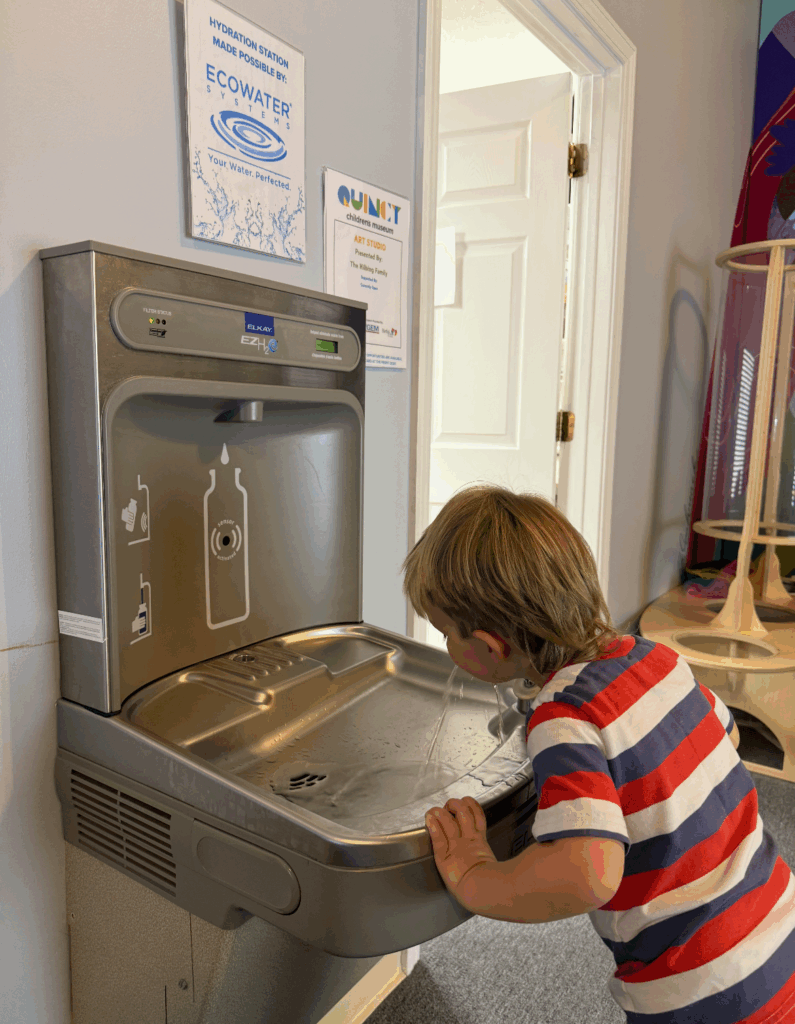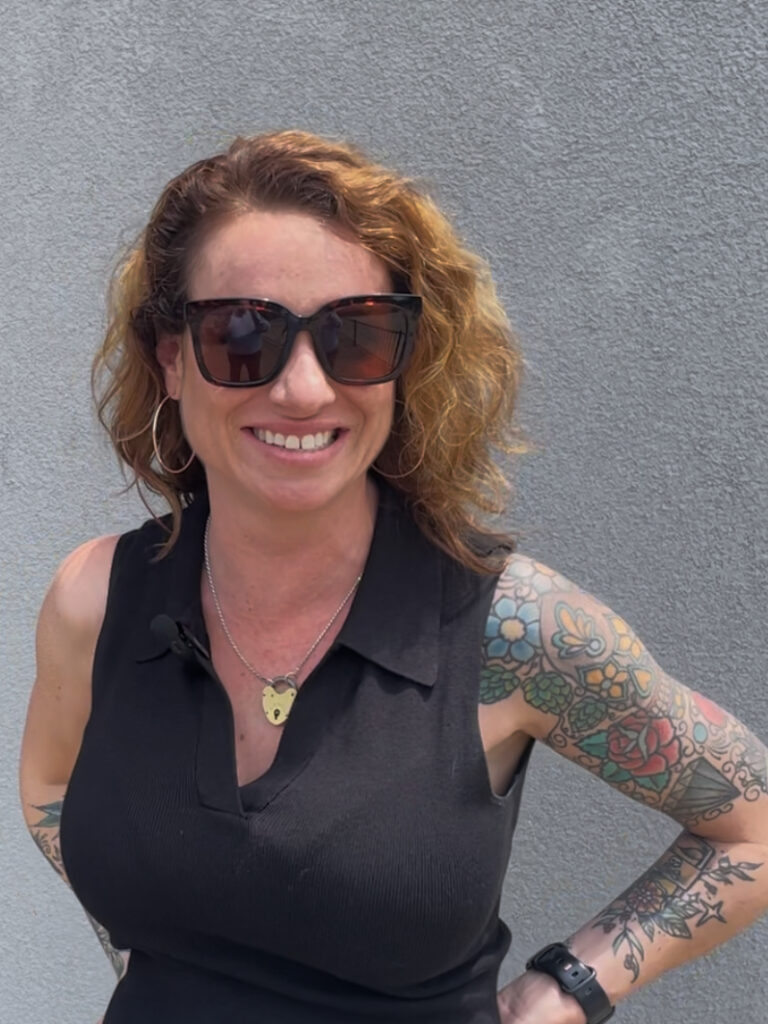That’s what I call ‘High Quality RO H20’

QUINCY — I overheard a conversation while tending bar the other day that shook me to the core.
Here’s the gist of it: When you smell something, it’s because particles of that thing have gotten into the air, and got into your nose, dissolved into the mucus membrane, and are sensed by the receptors there which send a signal to the brain.
You smell poop? There’s actual poop in your nose. You smell that stinky guy at work? His physical musk has snuggled up inside you like it’s paying rent. When a bus boy at your favorite restaurant leaves the dumpster open outside and that warm trash stank is wafting into the kitchen through an open window, that stench, the particles of rotting meat and putrefied, gelatinous vegetable matter is surfing the summer breeze and nestling into the nooks and crannies of your tenderloin.
It’s true. Trust me, I asked ChatGPT.
I started to think about the broader context of this revelation. In what other ways were disgusting things
making their way into my temple?
Like when I swear I could almost taste that one girl from the bar’s bad breath.
My wandering mind was brought back to reality by a dehydrated patron asking me for a water with no ice
so that he could slam it down and get back to boozing. Priorities. I drank one myself and thought about what I was experiencing. I mean, what should water taste like?
The Flavor of Nothing
Over the next few weeks I thought about this everywhere I went and every time I drank water.
The science of this is pretty clear. H2O should be tasteless. It makes sense considering as humans we are upwards of 60% water. The human brain is looking for patterns, inconsistencies, threats. There is no need for it to detect itself. An ancient hunter gatherer perched at the opening to his family cave would become saber tooth tiger food if he was constantly distracted by his own smell or taste.
And isn’t that one of the primary functions of our senses? Smell and taste alike function as a way for us to identify what is good and move towards it, and what is bad, to move away.
Decaying flesh, sewage, and the like will make us sick or even kill us so they smell and taste bad as a
warning for us to get away from them. Fresh food sources, the sweetness of fruits and the crisp and clean flavor profile of healthy vegetation is attractive to us because they are nourishing, and so we are attracted to them.
But time and time again, from the tap water gushing forth from a worn out and faded hose to the bougiest of designer waters bottled in the Swiss Alps or some idyllic island paradise, there was a flavor profile. All except one. The water from my home RO system.
RO is what the cool kids call reverse osmosis, a filtration system that uses pressure to push water through a semipermeable membrane that is so fine that (basically) the only thing that can get through are the hydrogen and oxygen molecules of which pure water is comprised. When you drink RO water you taste nothing but the beautiful, thirst crushing, soul restoring wetness of hydrogen and oxygen.
This revelation opened a pandora’s box of questions about the hows and whys of water flavor profiles. Not just regarding why my tap water tastes bad, but why some of the most expensive water on the planet tastes like anything at all. What are all of these entities adding to their water? Why are they adding it? And what does it mean for those who drink it?
Ask the Water Guy

I decided to go to the best source I had on water purification, my husband’s brother-in-law, Tyler
Kaufmann. Tyler owns Ecowater, a company located at 1843 Broadway, right here in Quincy. Ecowater installs and maintains RO systems and water softeners, they create lab water, which is ultra-pure deionized water, which is used by labs and hospitals, and for those that aren’t ready to make the RO leap, they sell jugs of water that can be refilled via a drive-in kiosk at their Broadway location.
Ecowater has had a Quincy location since 1972. After working for the company since he was kid, Tyler
bought the business in 2018. Although he put in our RO system and water softener a decade ago when we built our house, my husband’s family have been RO practitioners for 30+ years. For them, it started when they lived over on Curved Creek, and the source of their tap water was an old well. The taste of the water drove them towards other options, arriving first at an office-style water cooler filled with everything from store bought water to jugs filed up at his grandparents’ house. Eventually, they arrived at an RO system and they’ve never looked back.

Pure as the Driven Snow
For centuries the water that fell from the sky was seen as the hallmark of purity, much like myself. To the ancients, nature was the infallible construct of God, and the ascension and eventual descension of water moving through what we now called the water cycle was a much better bet than many other sources, especially urban ones, for which a correlation to illness had long been known.
Today, the water that falls as rain and snow is known to be terrible for you. Not due to some design flaw in the planet, but due to it coming into contact with air pollutants. Municipal water departments understand that not only is rain full of impurities, but as that rain moves through streams and rivers and comes into contact with human waste, decaying plant and animal material, industrial and agricultural byproducts and a myriad of other contaminants, water treatment is necessary to keep the public healthy.
Most water treatment is composed of multiple stages. The first is sometimes called primary clarification,
where chemicals are added to the water that attach themselves to the larger particulates. Next is
sedimentation, where the water is left to sit in a tank, and those particulates sink to the bottom. These two processes are a good first step in ridding the drinking supply of “bad stuff,” but the evidence is murky when it comes to some secondary concerns.
How much residual aluminum sulfate, chlorine, ferric chloride, and iron salts (the things they add as
coagulants) are left in the water after this step? The answer is almost always “some.” And at what levels do these additions become toxic to humans?
Ferric Chloride is well known to cause irritation or even burns when it comes into contact with human skin and gastrointestinal irritation when ingested. Chlorine, although considered safe for humans at lower levels is toxic at higher ones, and like so many facets of this discussion is poses the question of, why would I settle for any if I could have virtually none?
Other substances, like fluoride are added throughout the U.S. to prevent tooth decay. But studies regarding the safety of ingesting fluoride are alarming at best. An article published in the Journal of American Medicine (JAMA) in 2025 found a significant connection between fluoride and IQ scores in the children exposed to it. The higher the amount of fluoride consumed, the more dramatic the negative effect on their scores. In other words, fluoride makes kids less intelligent.
Despite these findings, making people believe that tap water could be hurting them is an upward climb.
A few years ago, my husband sent a previous version of this JAMA article to a friend who had mocked his
advice against drinking tap water. Despite compelling evidence from one of the world’s leading scientific
journals, the friend doubled down. I mean, come on, we all grew up drinking tap water and we’re all ok?
Right? Right?
It seems, that like many things “health” these days, for every person warning that something is hazardous, there are dozen more who are not only saying they are wrong, but that they are crazy. Even in the face of compelling scientific data, we need to ask ourselves, who is funding the data? Who is reporting it? What do they stand to lose or gain?
The H2 Unknown
I won’t bore you too much more of the ins and outs of municipal water filtration, but it’s important to note
that beyond the chemicals introduced knowingly by the city, the thick layers of sludge inside the water
towers, and the presence of decades old, lead water pipes, the modern world introduces a second (and
perhaps even more terrifying) round of substances into the water cycle.
Pharmaceuticals, Antibiotics, hormones, and other drugs like antidepressants, agricultural medicines, and more common drugs like acetaminophen and codeine have all been found in detectable levels in U.S. drinking water. That’s the water out of the tap, not the water before it has been purified.
And while some will pass these threats off by noting the small levels at which they are detected, they neglect to concern themselves with the chronic nature of their consumption. In other words, while the amount of these drugs in the water supply is small, if you drink tap water, you could be consuming them everyday.
The implications of this are completely unknown to science at this time, but in a world where it seems
everyone is battling autoimmune issues, where cancer rates have skyrocketed, and insurance is unaffordable because of the sheer volume of people seeking medical care, it probably needs a closer look. Much of my concern is for the kids. Developing bodies and brains are delicate.
So, when I heard that Ecowater was installing an RO system at the Children’s Museum at 115 N. 4th street for free, it solidified my drive to craft an article.

It’s for the Kids
The Quincy Children’s Museum is a community endeavor spearheaded and operated by Amy Peters, that acts as a hub for hands-on learning, social interaction, and play for local kids. The games and activities inside the museum help kids learn through interactive play and problem solving but also acts as a community hub where families can interact and engage meaningfully with the community.
Tyler and the crew at Ecowater thought that they would be the perfect recipients of a brand new RO system, water fountain, and water bottle filling station. And because they knew that the museum is in a critical stage of fund raising for their eventual move to a large facility within the old Paper Box Building, they provided all of the equipment and did the whole thing for free.

Soften Up!
It seems that the public is coming around to the idea of at home water treatment. More and more of my
friends and acquaintances are having these systems installed in their home to add a final layer of safety and palatability to their water.
Water softeners are growing in popularity as well. Softeners mitigate the effects of hard water by removing minerals, which can make showers more effective by helping soap to lather, preventing the buildup of soap scum and other mineral residue in showers and baths. After living in a string of houses and apartments with hard water the switch was incredible. My skin is softer, and my hair is giving 80s Pantene Pro V commercial bounce.

The benefits of these machines stretch well beyond the shower. The minerals in hard tap water build up
inside of your fixtures, pipes, and appliances, reducing their lifespan. Think about adding years of life to
your water heater, your washing machine, your dishwasher. Water heaters that are filled with softened
water heat more efficiently too, reducing utility costs. You can use half as much detergent in your clothes
washer and dishwashers alike. The list goes on.
Don’t get me wrong, sometimes the mineral content of water can be a good thing. Earlier I mentioned
designer water with added (or sometimes naturally occurring) minerals. Places like Fiji or the Swiss Alps
produce mineralized water known to create a better mouth feel and overall taste. But Quincy is not one of
those places. The mineral content here produces scaley, stinky, hardwater that the city filtration system does little to mitigate. A softener fixes that problem too.
The bottom line is this: Quincy’s water report card could be a lot worse. As city water departments go,
Quincy does a great job. The problem with tap water is systemic and unavoidable. Even if the city installed huge, commercial RO systems for the whole city, the storage of that water for long periods of time and the movement of that water through hundreds of miles of pipe would (without the addition of chlorine) create algae blooms. It is simply unavoidable.
If you want to give RO water a try, stop by the Abbey. They serve RO water on a system installed and
maintained by Ecowater. But be warned, you might suddenly find your at-home tap water now seems
subpar. You might decide that the taste alone is cause for conversion.
You might find, just like my husband’s friend that mocked his tap water warnings, that at home RO isn’t enough. And suddenly, you are installing RO systems at your place of business, you are snubbing that water fountain and going thirsty until you make it home. You might recognize, that despite all of the evidence science provides about the dangers of fluoride and chlorine and pharmaceuticals in the water supply, it all comes down to the simple and somehow innate understanding that pure water shouldn’t have a flavor.
An RO system provides a final stage filtration for nearly perfect, clean, and amazing tasting water.
Water that tastes like nothing at all.
Related Article: Tribune report shows six of 10 Illinoisans drinking tap water with toxic chemicals; Conte says chemicals found in Quincy but don’t pose serious threat – Muddy River News
Miss Clipping Out Stories to Save for Later?
Click the Purchase Story button below to order a print of this story. We will print it for you on matte photo paper to keep forever.

